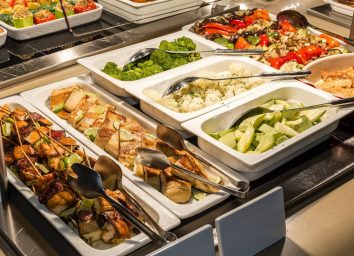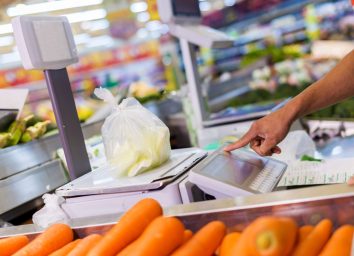26 Secret Signs Your Produce Has Gone Bad
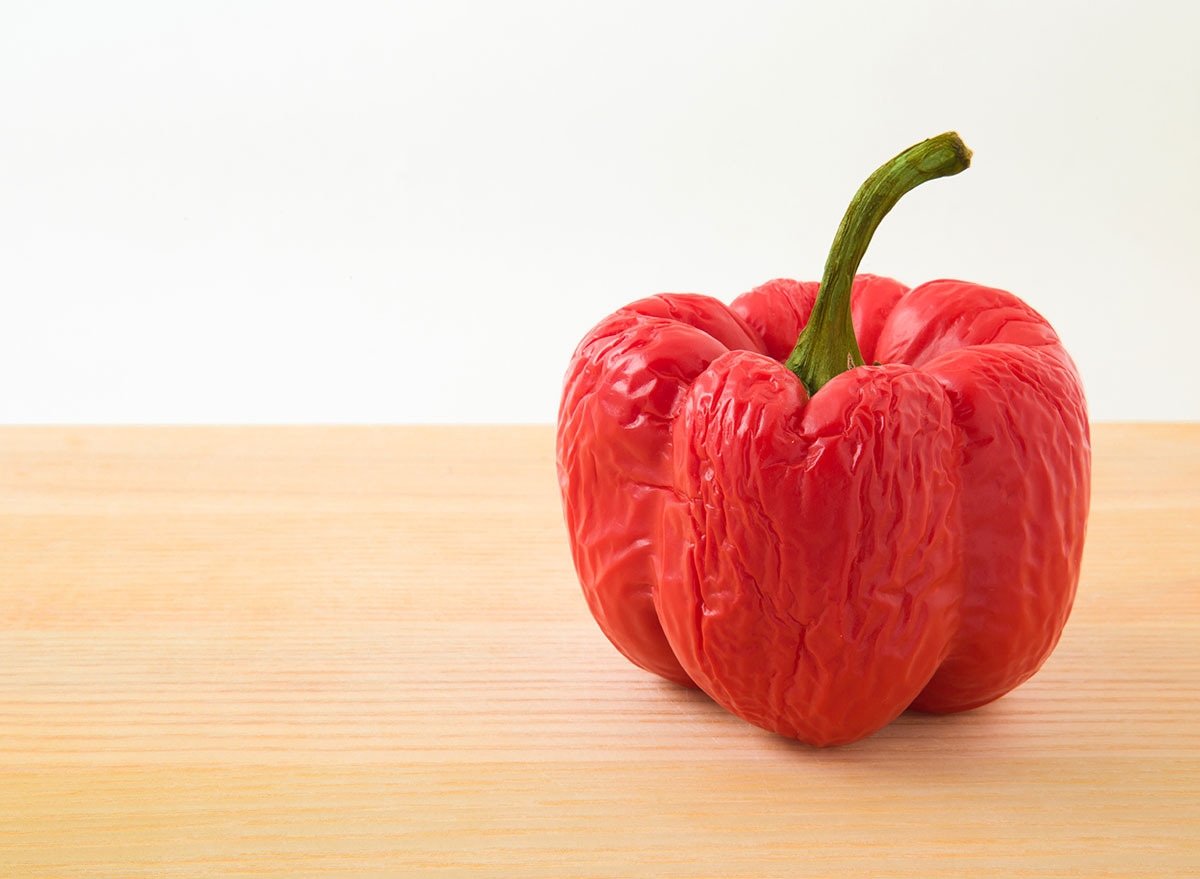
You already know eating more produce—both vegetables and fruits—is considered a key to a healthier life. But is all produce truly created equal? Well, as you're about to learn with these warning signs, they're not!
See, despite produce being overall good for you, full of necessary nutrients, vitamins, and antioxidants, it's not always wise to put any type of produce on your plate. There are a few important indicators to look out for when you're perusing your fridge and pantry that tell you whether your food is still good to eat.
Now, you're going to be fully armed with the keys to knowing exactly how to spot the perfect produce. Here are 26 secret signs your produce went bad. And for more wisdom, here are 30 Simple Tricks to Make Your Produce Last Longer.
It's brown underneath the stem of an avocado.
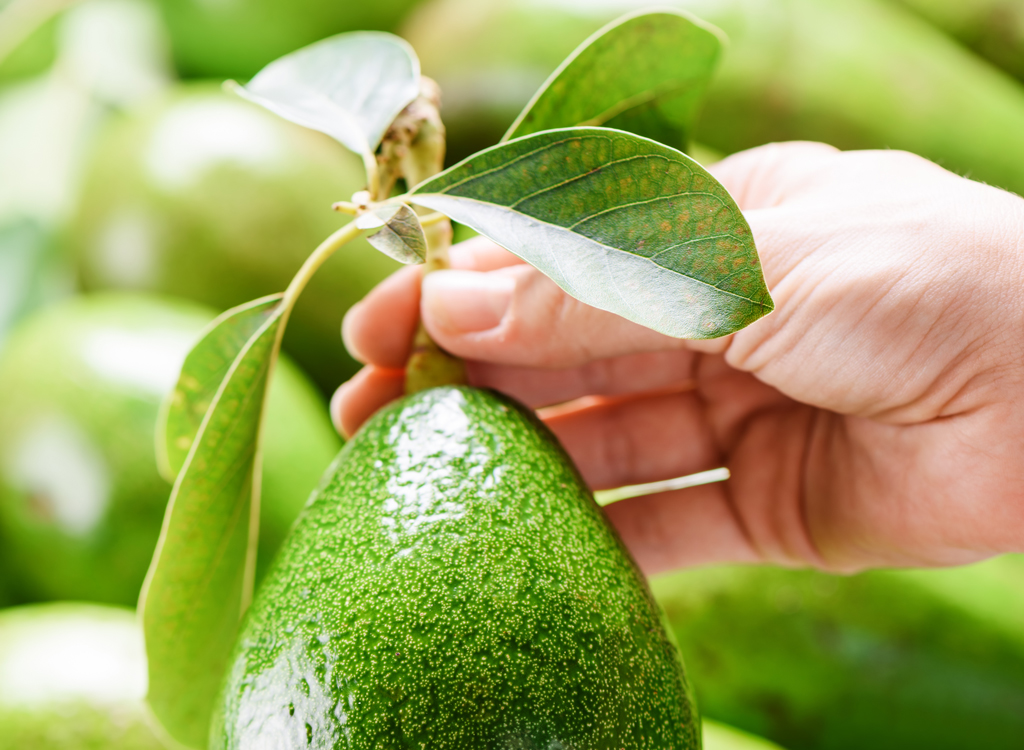
The No. 1 trick to ascertaining an avocado's ripeness lies right under its stem. Pop the little brown stem off and depending on what color the skin is underneath, you'll know if it's still good to eat or not. If it's brown underneath the stem (or black), then it's overripe. Hard pass. Want to make sure your avocados last long enough for you to make some homemade guac? Here's The Simple Trick That Keeps Avocados Fresh.
Tomatoes are too squishy or too firm.

When you give a tomato a light squeeze, it should have a little give. If your tomato is either too squishy or wrinkled, its a secret sign it's gone bad.
STAY INFORMED: Sign up for our newsletter to get the latest food news delivered straight to your inbox.
Melon sounds dull when you thump it.
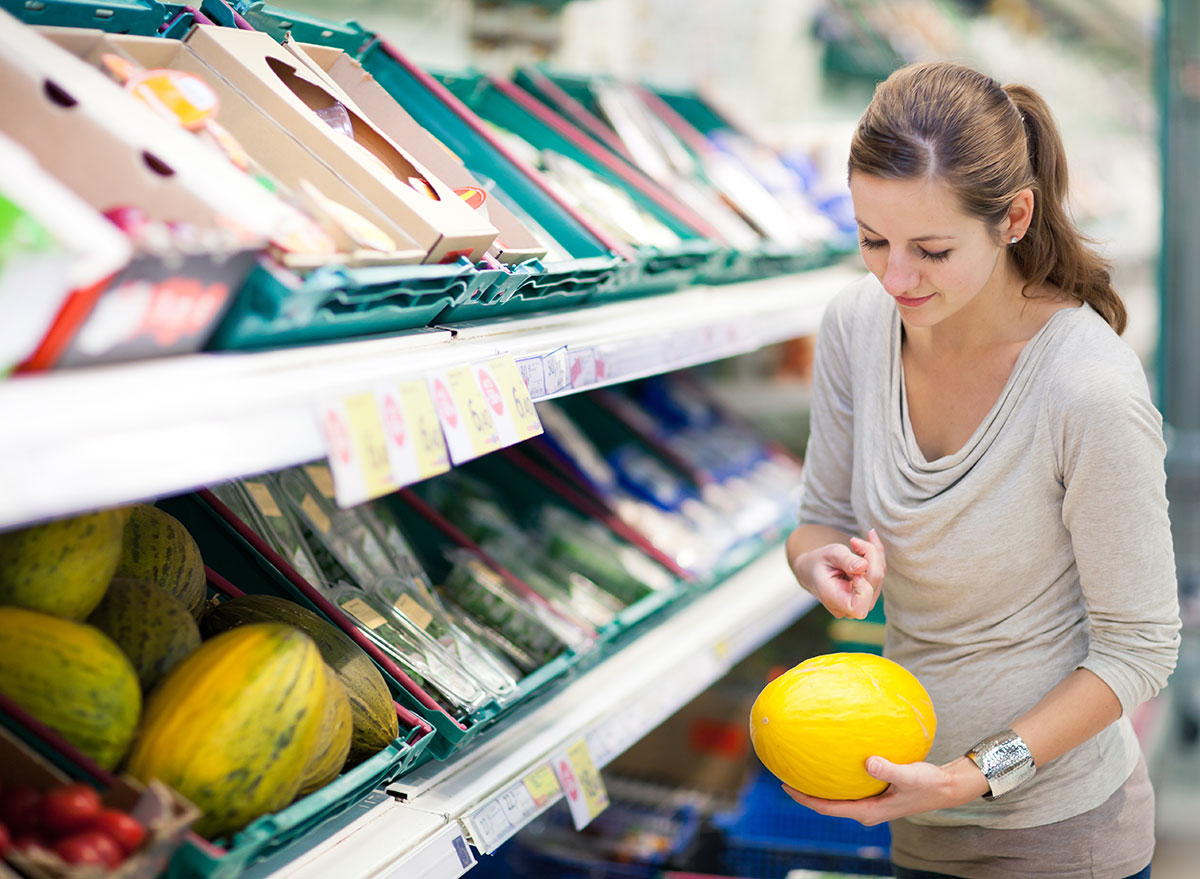
Thumping a melon is an age-old trick. If you whack the side of the melon and hear a hollow inside, it's ready and ripe. If you thump it and it sounds dull inside, pass on that melon. While you're shopping for produce, make sure you're not partaking in the 15 Things You Shouldn't Do When Buying Produce.
Onions smell more pungent than usual.
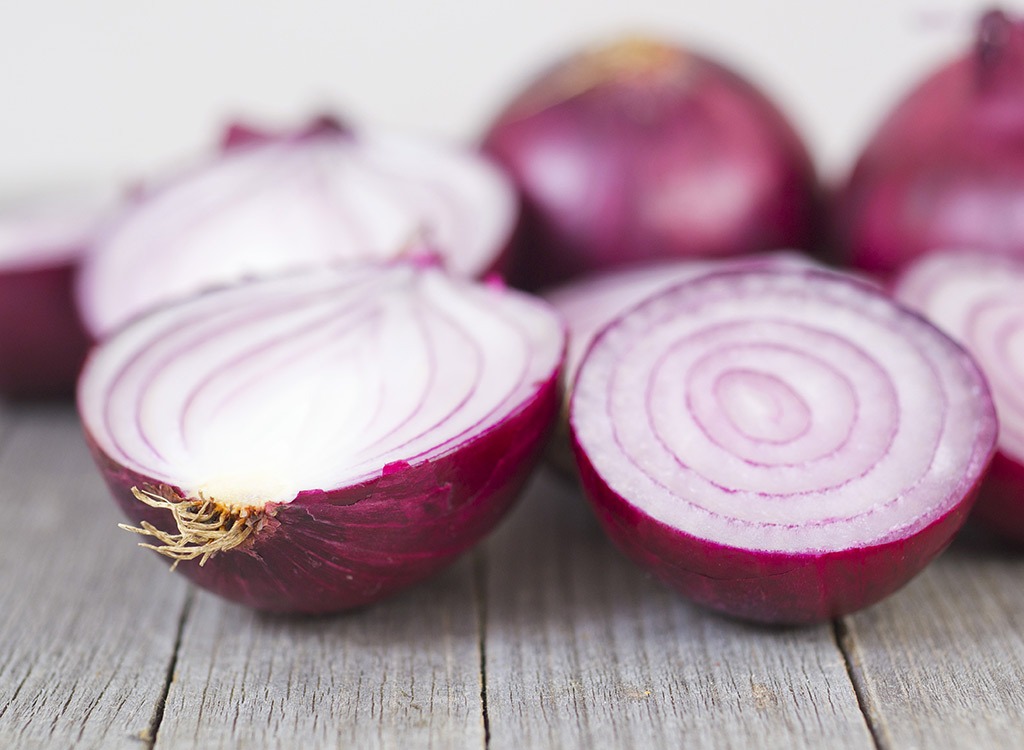
OK—this one's a weird one because onions always smell, well, oniony. But if they smell particularly onion-y, then that's an indicator they have gone bad. You will be able to tell the difference, that's for sure.
Produce is significantly smaller than its counterparts.
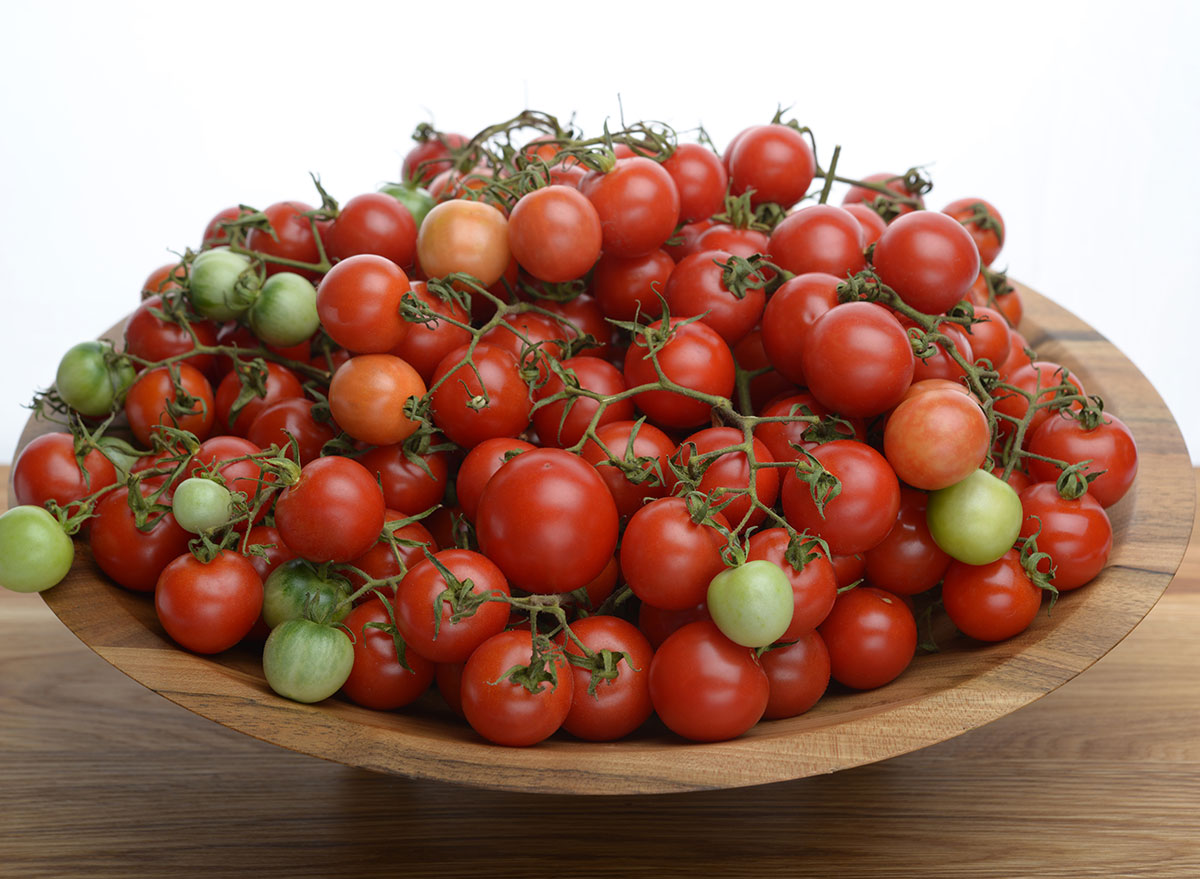
You'll want to forego any piece of produce that is significantly smaller than the rest of its kind. Smaller produce usually indicates it was harvested too early. Produce that has been harvested prematurely won't ripen the way it should. Skip it. When you have found the perfect tomatoes, Here's How to Make Homemade Red Sauce For the Entire Year.
Produce is significantly bigger than its counterparts.
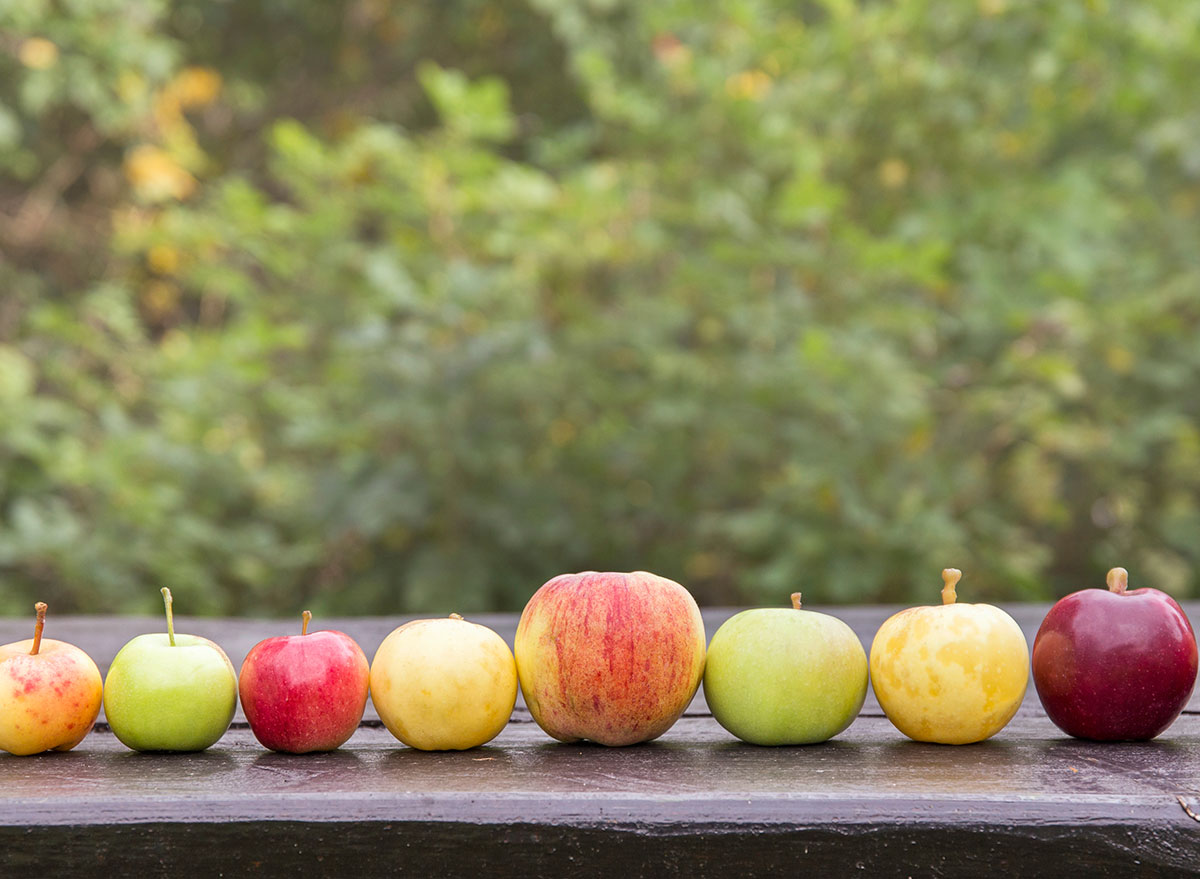
Similarly, it's not always a good idea to pick the biggest produce either. Produce that is significantly bigger than the rest of its counterparts generally indicates that it was picked too late, as in, left on the plant too long. Bigger produce isn't necessarily overripe or underripe, but it could mean that the produce will taste tougher.
Kale leaves are a pale yellow color.
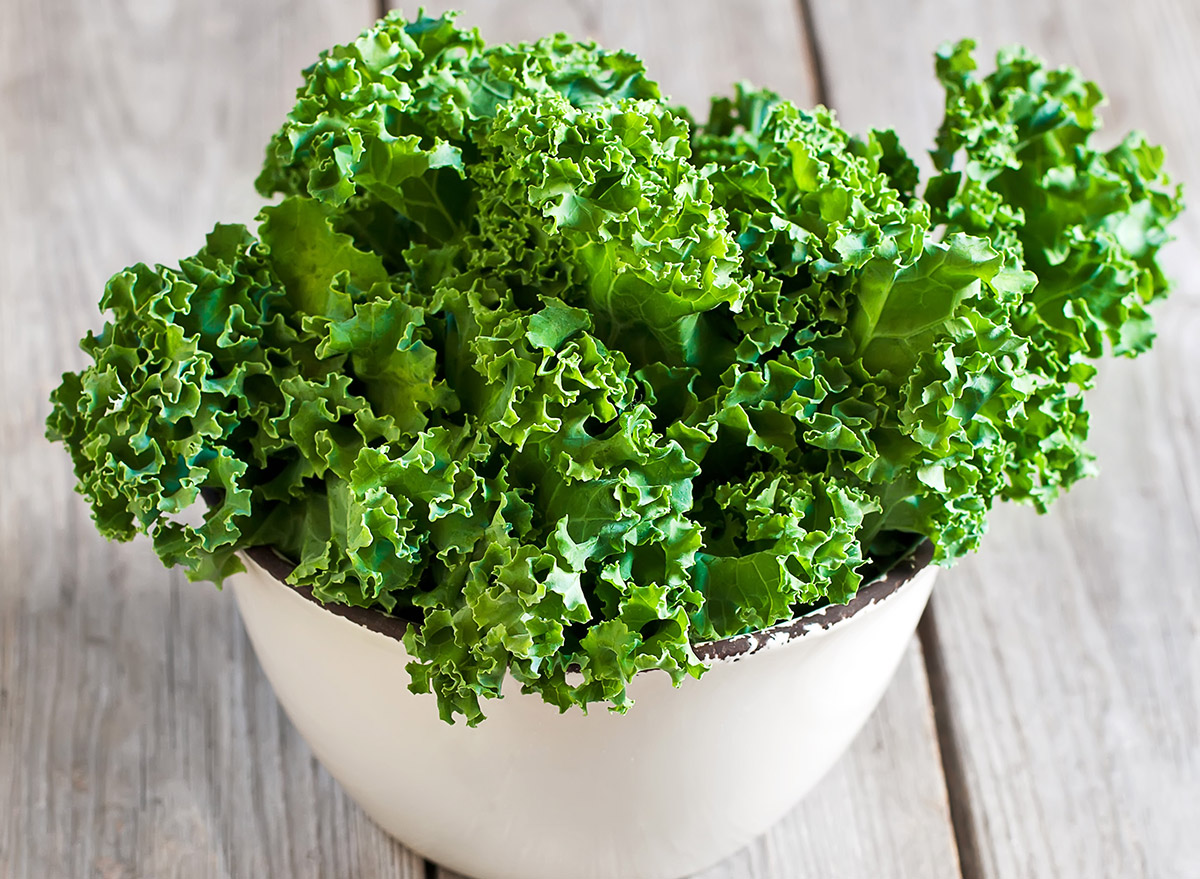
Kale should be a dark, vibrant green color. If kale looks pale green or even yellow, it will turn brown sooner rather than later. Once the leaves wilt, they will start to leak liquid, causing a gone-bad stench.
Limes feel light.
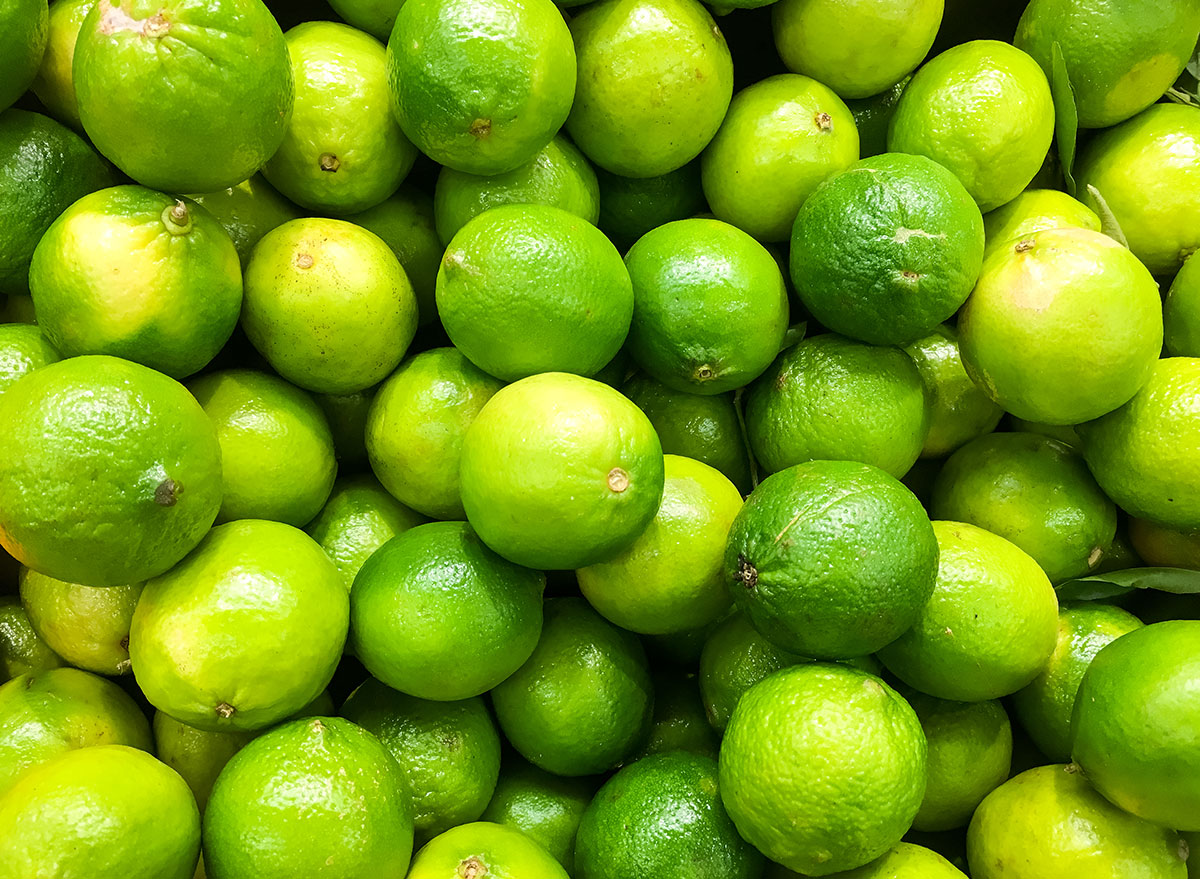
Pick up a lime. Is it heavy or lighter than the rest? A lime should feel pretty heavy, indicating that it has more water content and therefore, will be juicier. If a lime feels hollow or light or has brown spots, it's past its prime.
Berries smell too sweet.

To test the ripeness of berries, give 'em a quick sniff. If they smell particularly sweet, the berries are likely close to turning bad, so you need to use them—stat!
Grapes appear pale.
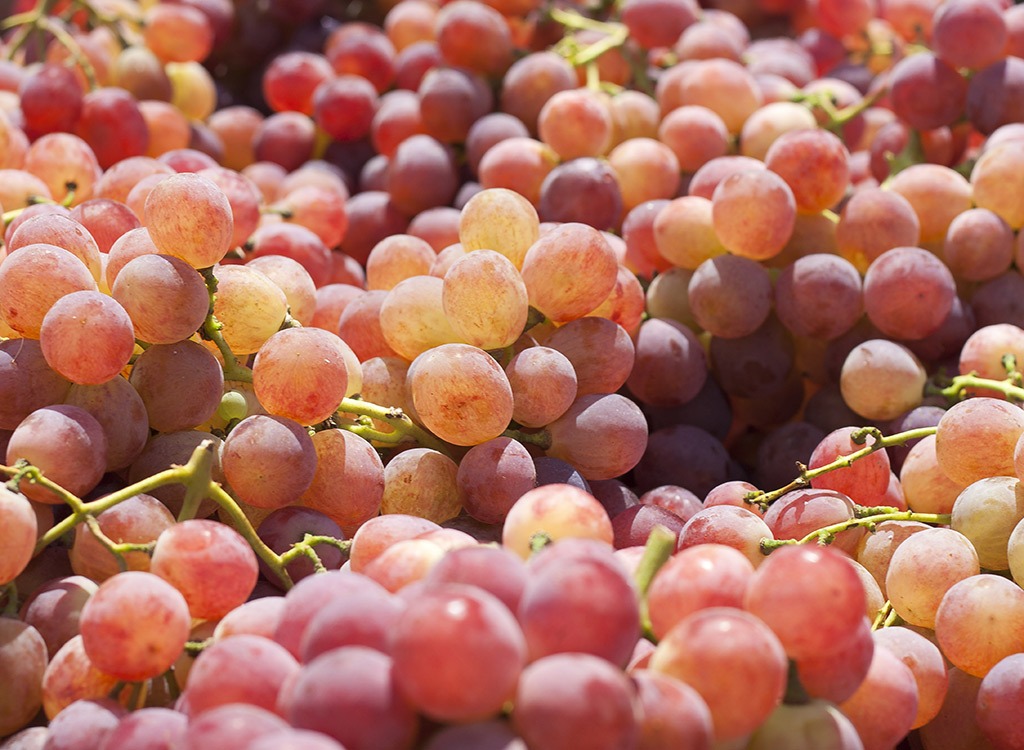
Grapes should be dark-colored in appearance. Grapes that are pale-colored aren't as fresh or ripe. If grapes are discolored, appear withered, or look brown, it might be worth tossing them.
Zucchini is not firm when squeezed.
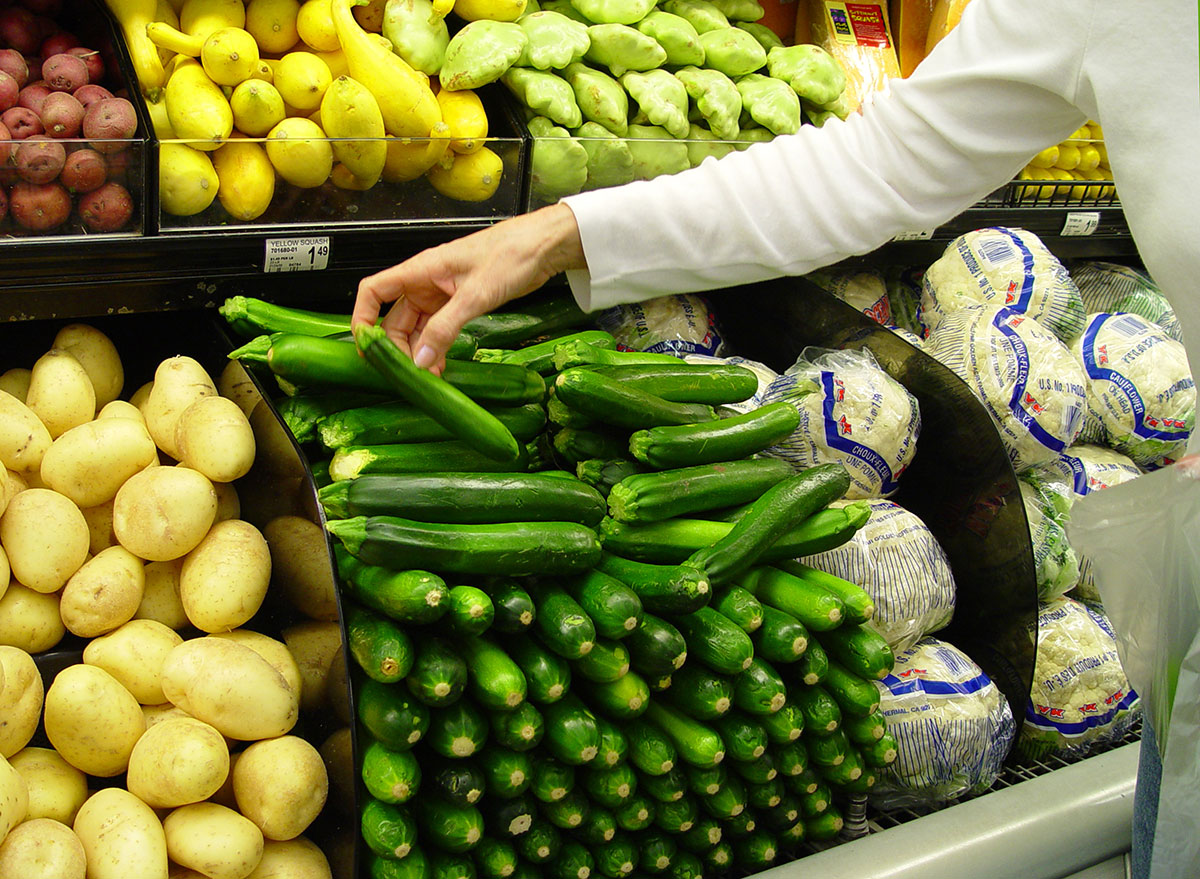
Zucchini should be a little firm to the touch. If it feels too mushy when squeezed, skip sauteeing it and consider adding it to soup.
Plums are too squishy or too firm.
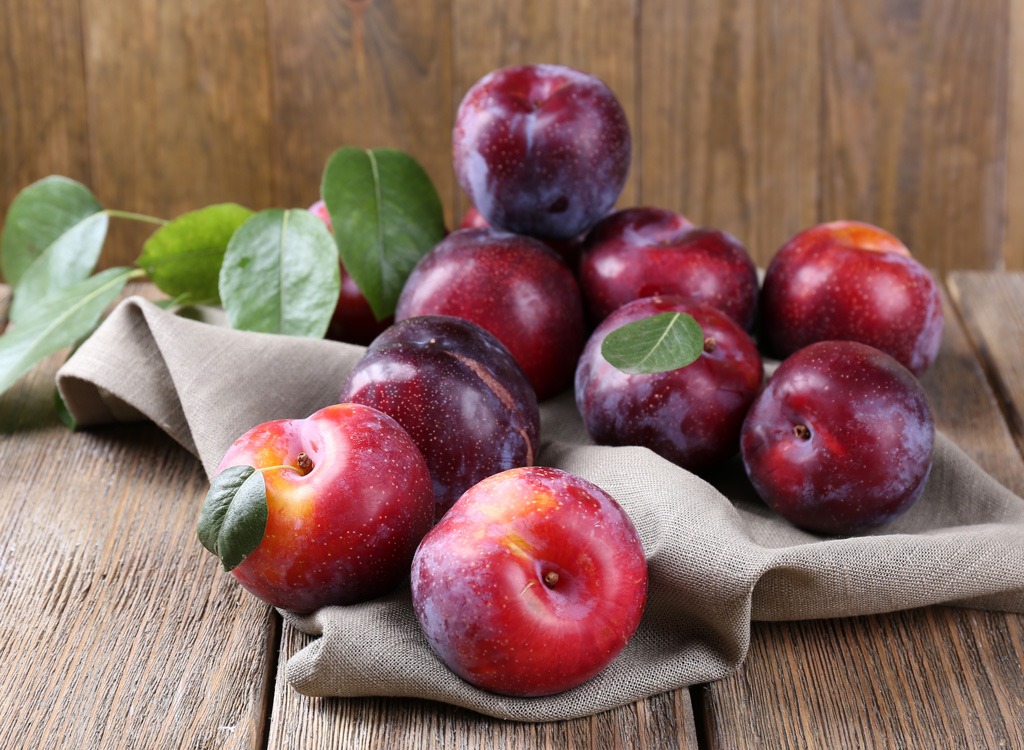
Plums are another type of produce that shouldn't be either too squishy or too firm. If you give them a quick squeeze, you should be able to tell if they are either too mushy or too firm.
Visible mold in berry container.
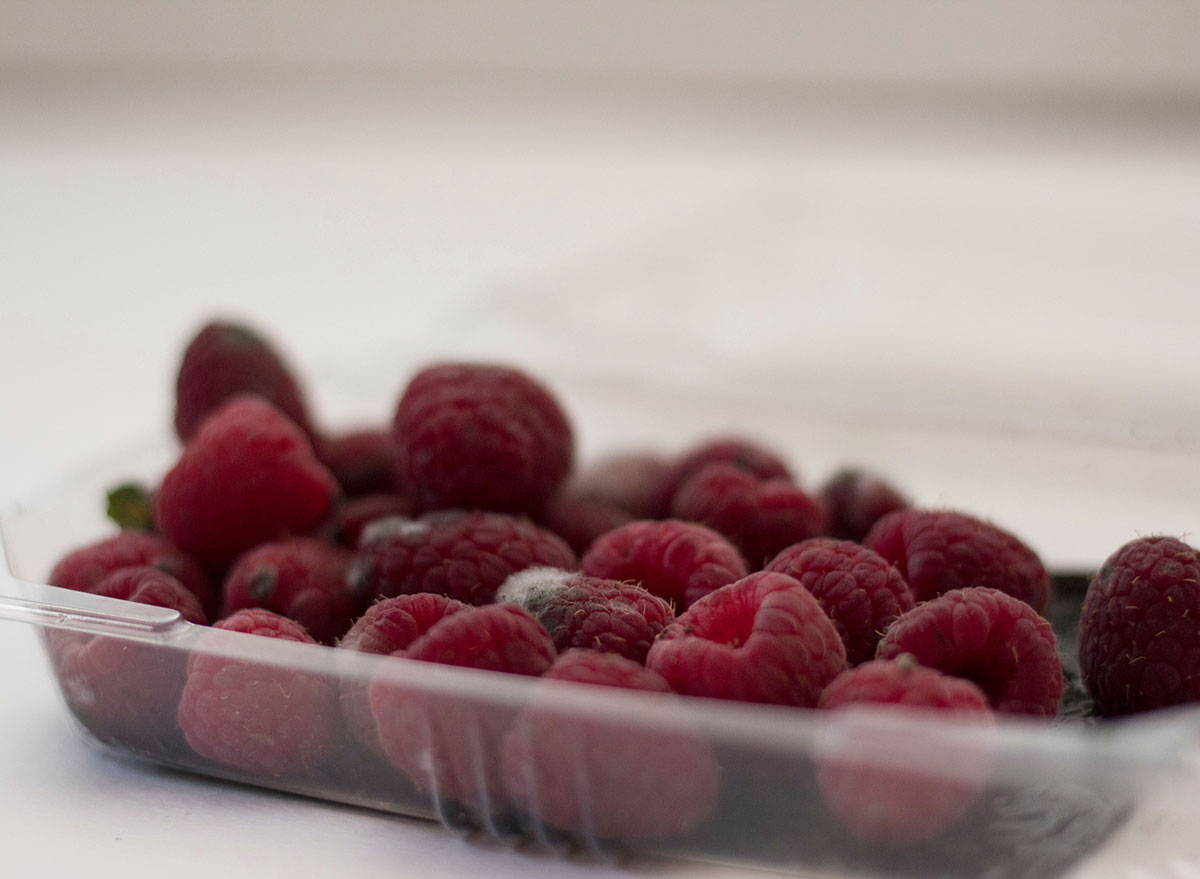
It should go without saying but if you can visibly note mold in a berry container (or on any piece of produce), then it's best to pass.
Any produce has brown spots.
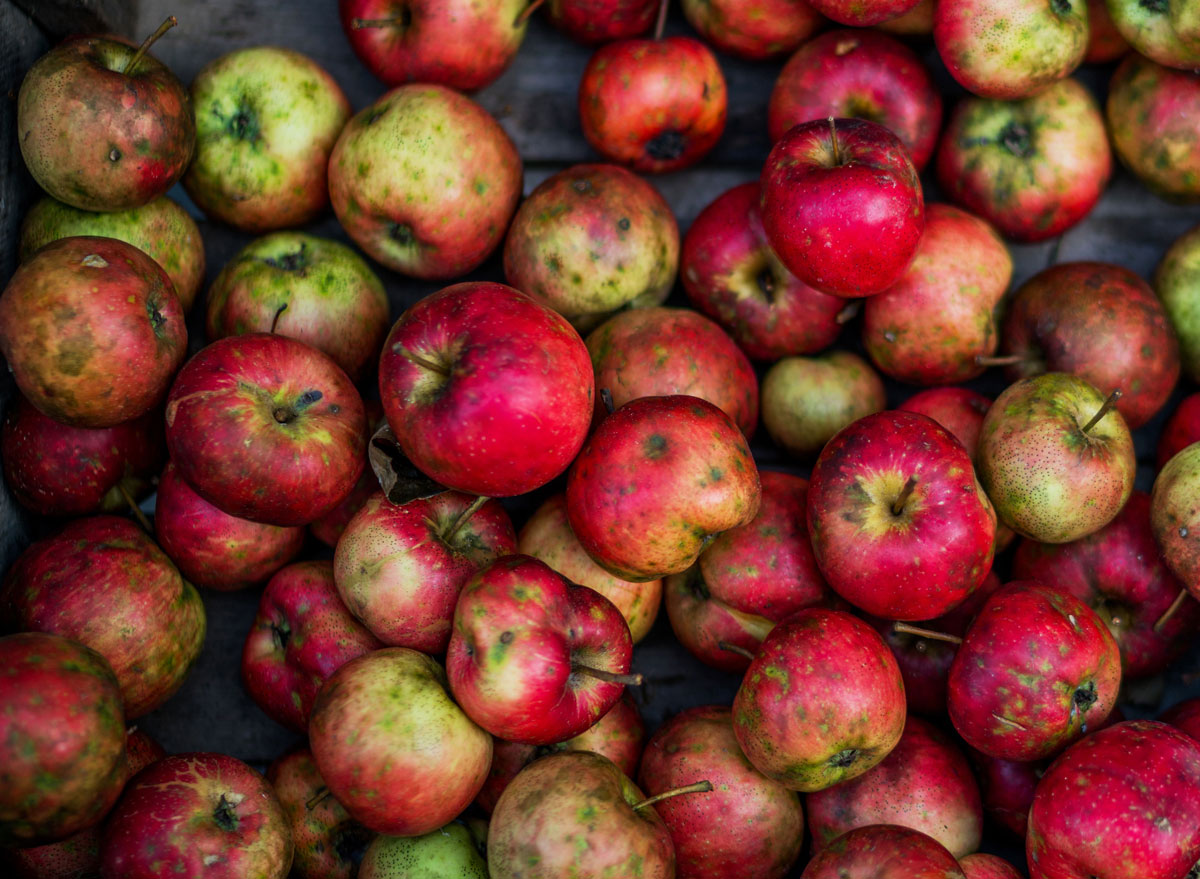
Produce of any kind shouldn't have brown spots. Brown spots could be an indicator of black rot, which is a fungal disease that causes the fruit to blacken, rot, and shrivel.
Any produce feels mushy to the touch.
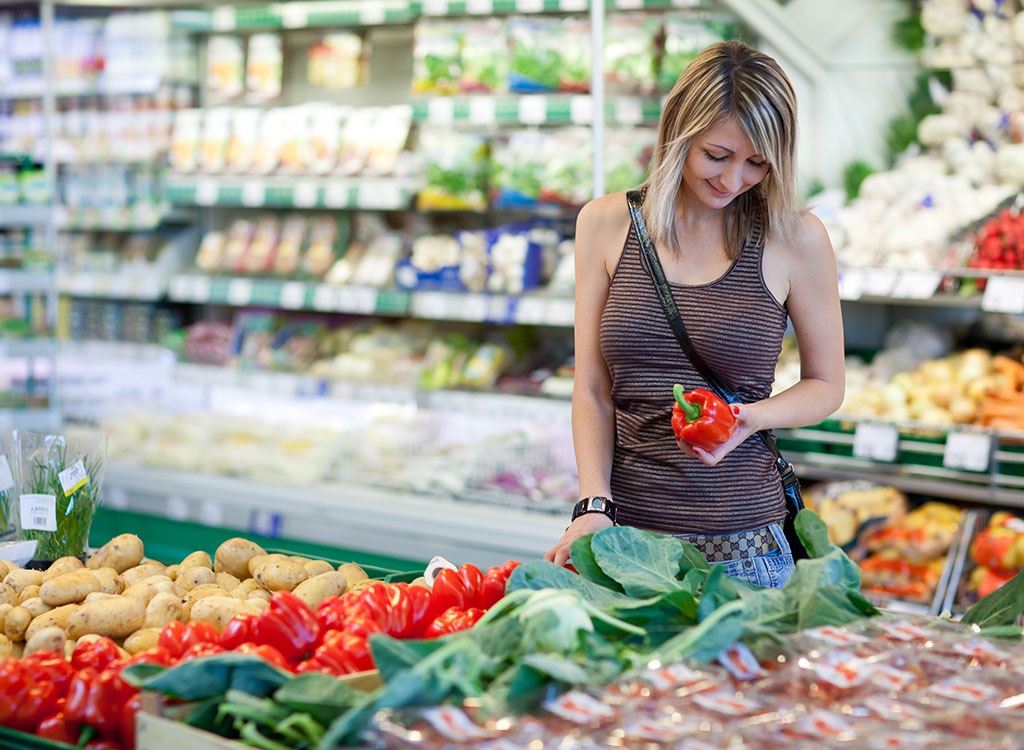
If you hold a piece of produce in your hand and it immediately feels mushy, it's probably bad or going bad.
Strawberries smell like mold.
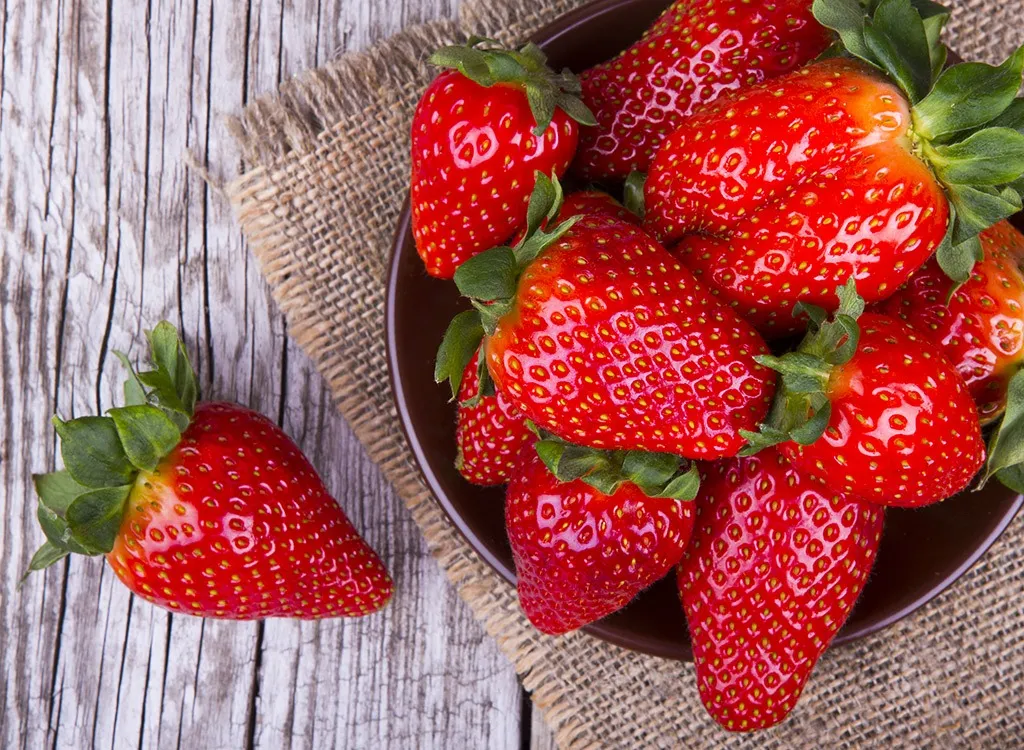
Give your strawberries a smell. Do they smell fresh and sweet? Perfect. Do they smell like mold or are growing mold? That's a no-go. Speaking of mold, Here's When It's OK to Eat Moldy Food—And When It's Not.
Banana peel feels thick to the touch.

A banana that's ripe and ready to be eaten should have a peel that's thin and can be broken and peeled easily. You probably already know the signs that bananas have gone bad, but if you need a reminder, the banana will be browned and flimsy. If it isn't entirely bad yet, you can always use these fruits in these 17 Amazing Ways to Eat a Banana.
Potatoes smell bitter.
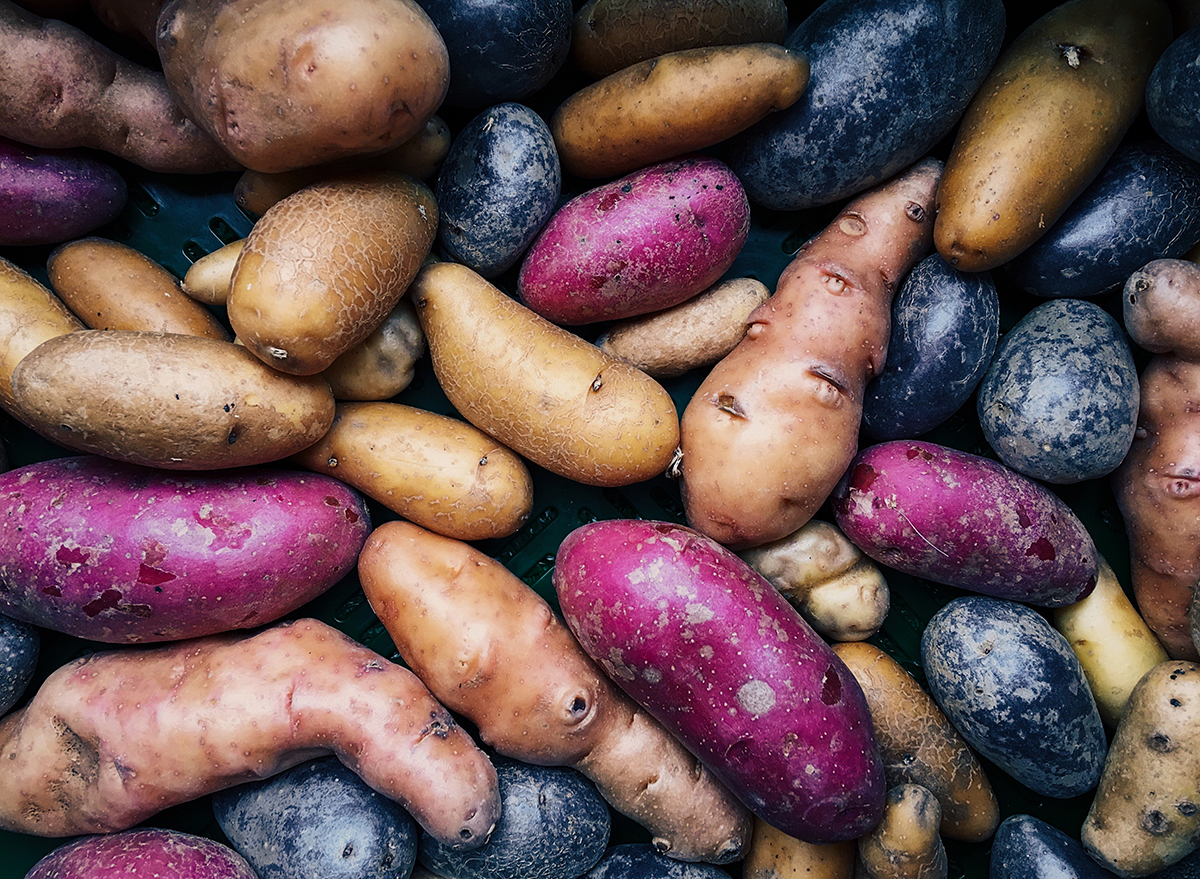
Potatoes that are ready to be eaten should smell earth-like and starchy. When potatoes start to go bad, they can give off a bitter smell. Even if the potato looks good visibly, it could have gone moldy inside, so be sure to smell it. If your potato is wrinkly, soft, or sprouting, these are other signs your produce has gone bad.
Oranges feel light.
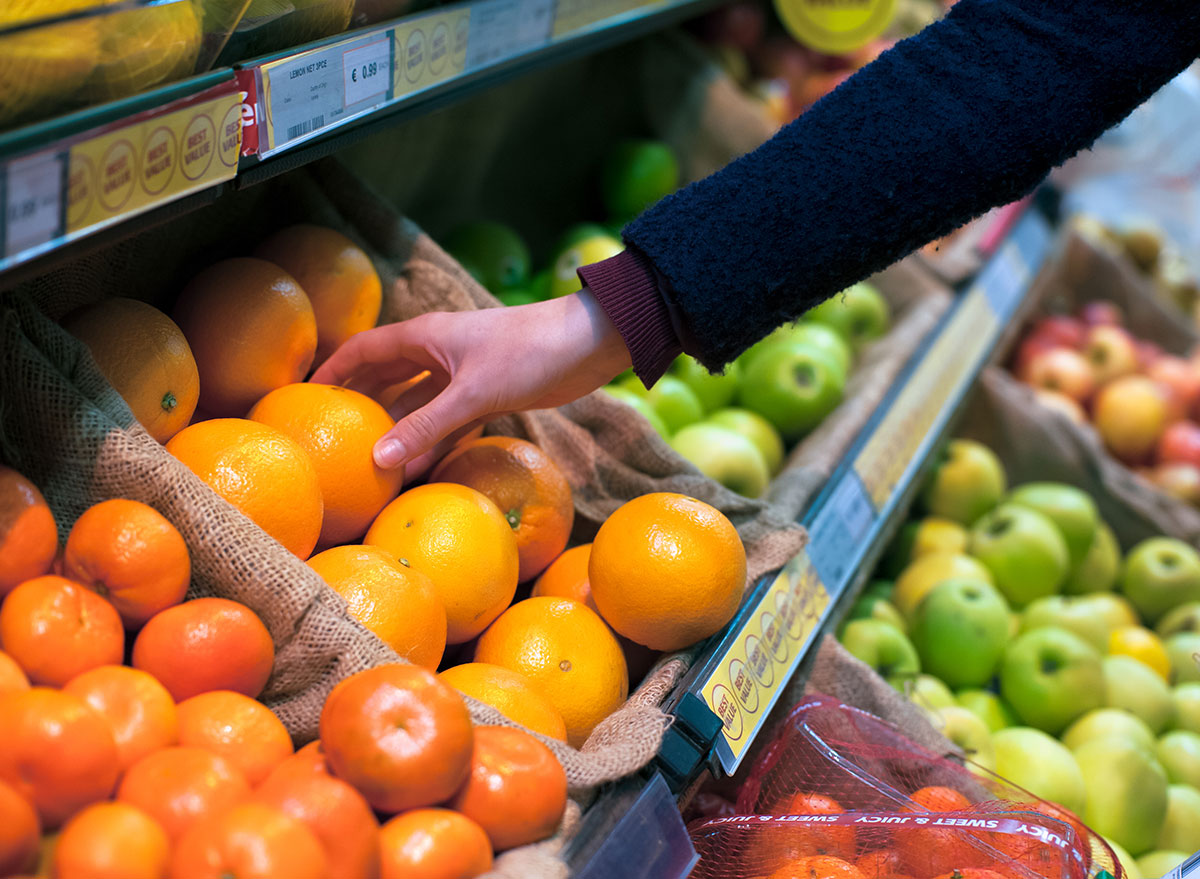
The juicier the orange, the higher the water content. You'll be able to tell if an orange is adequately juicy if it feels heavy in your hand. To keep oranges good for longer, you can keep them in the fridge.
Nectarines don't smell fragrant.
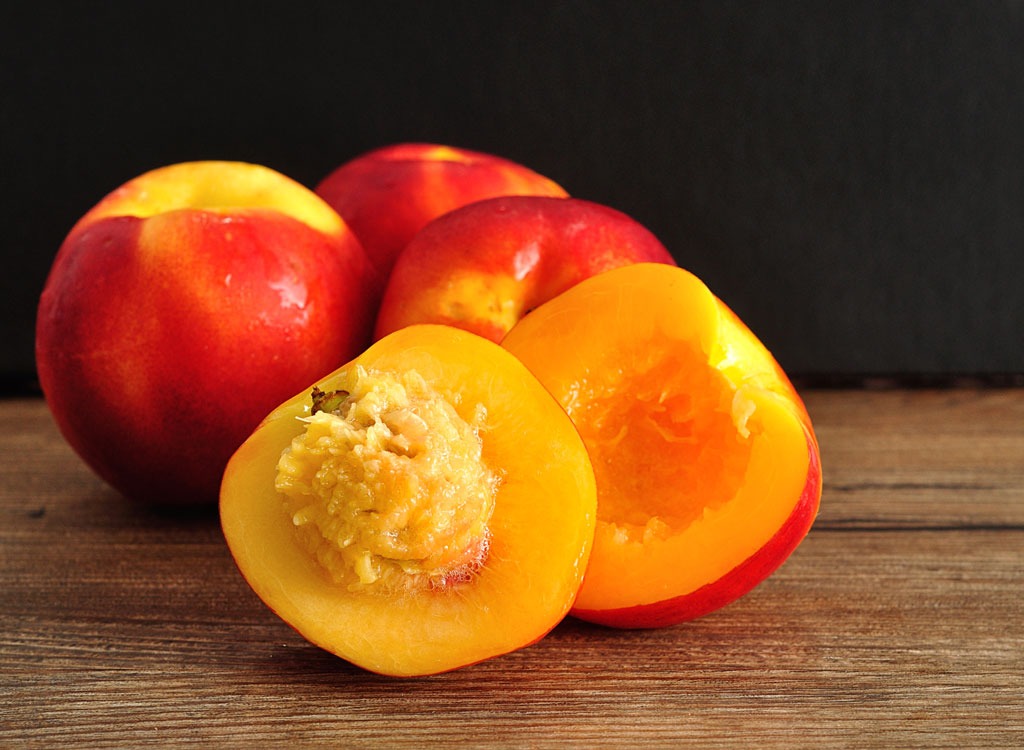
Smell your nectarines. It should give off a fragrant and sweet scent. If the nectarine isn't properly ripened, it will give off virtually no smell at all.
Asparagus has dark green or black tips.
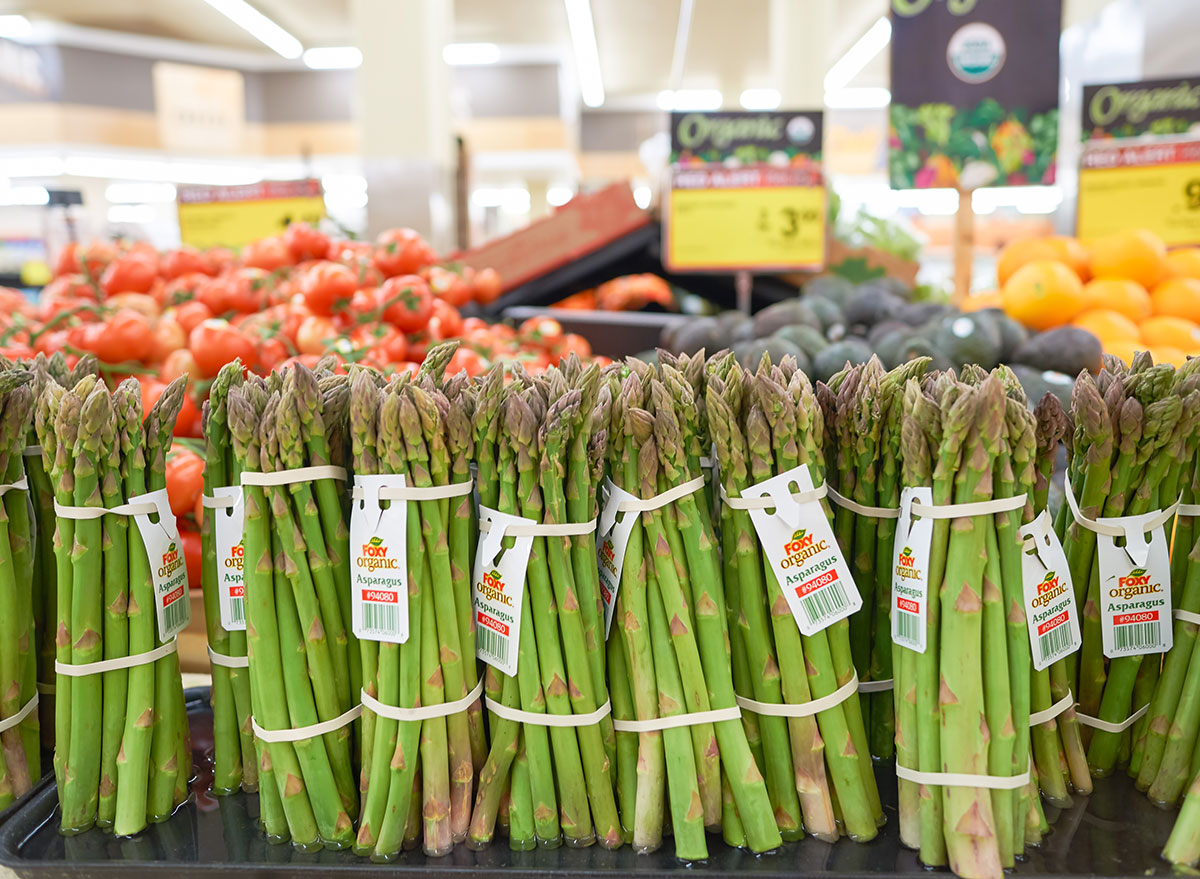
As asparagus goes bad, the tips of the vegetable start to darken. First, they'll turn dark green and then eventually, black. If you notice the tips of asparagus turning dark green, you might have to cook up those green beans you have instead.
Bell peppers have wrinkles.
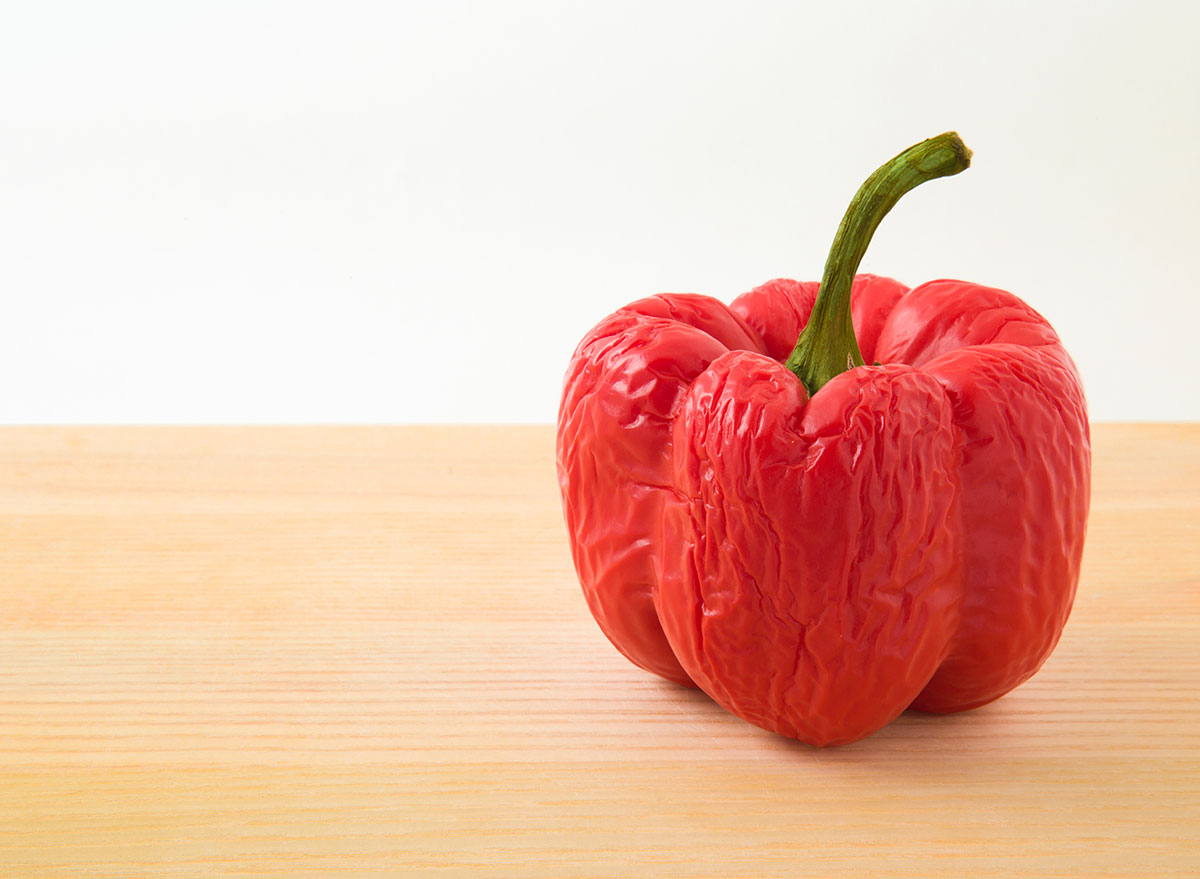
Ripe bell peppers have a firm skin. The closer bell peppers—no matter if the color is orange, yellow, red, or green—are to spoiling, the more soft and wrinkly their skin becomes. If the bell pepper is so soft its skin feels slimy, mold is close to developing.
Grapefruit feels light.
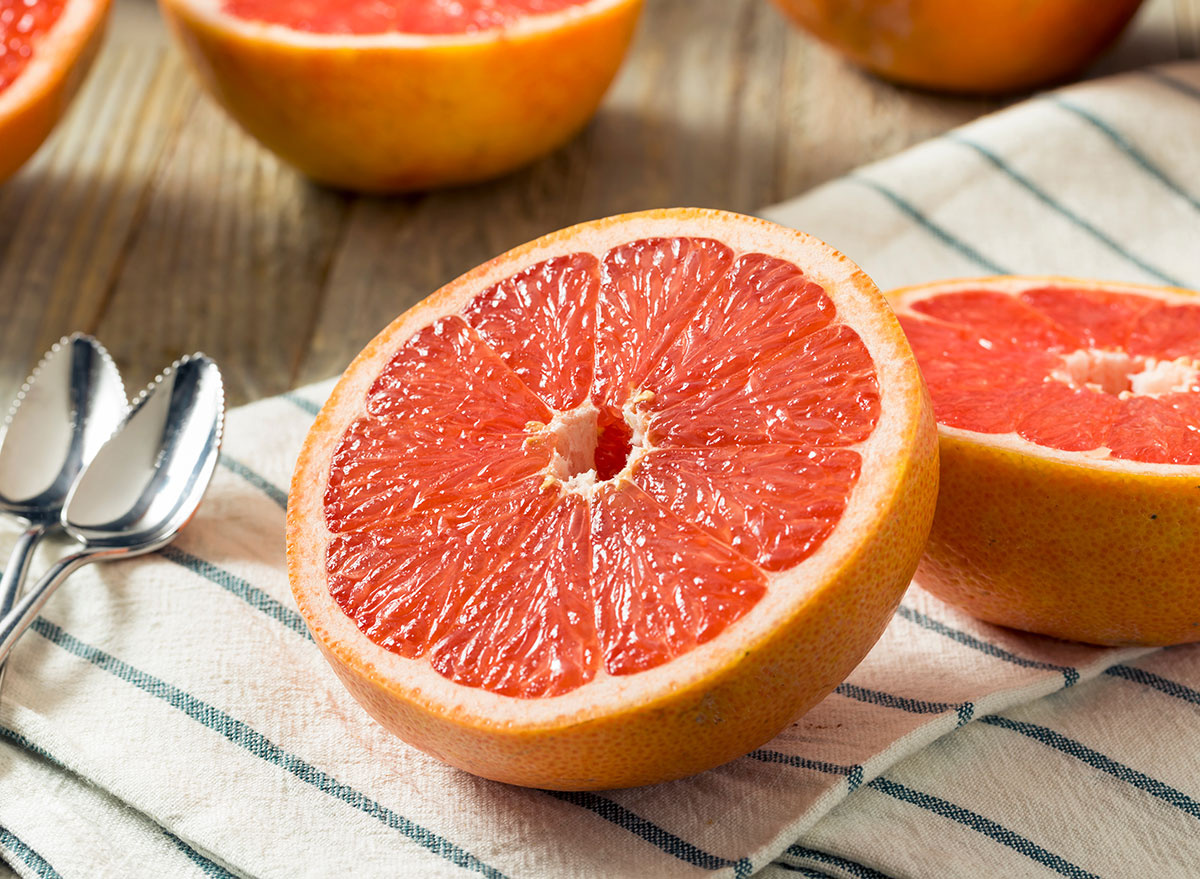
Like its citrus counterparts limes and oranges, grapefruit should feel heavy in your hand. If a grapefruit feels light, it has a lower water content and therefore isn't as juicy (aka ripe) as it should be.
Mushrooms smell like fish.
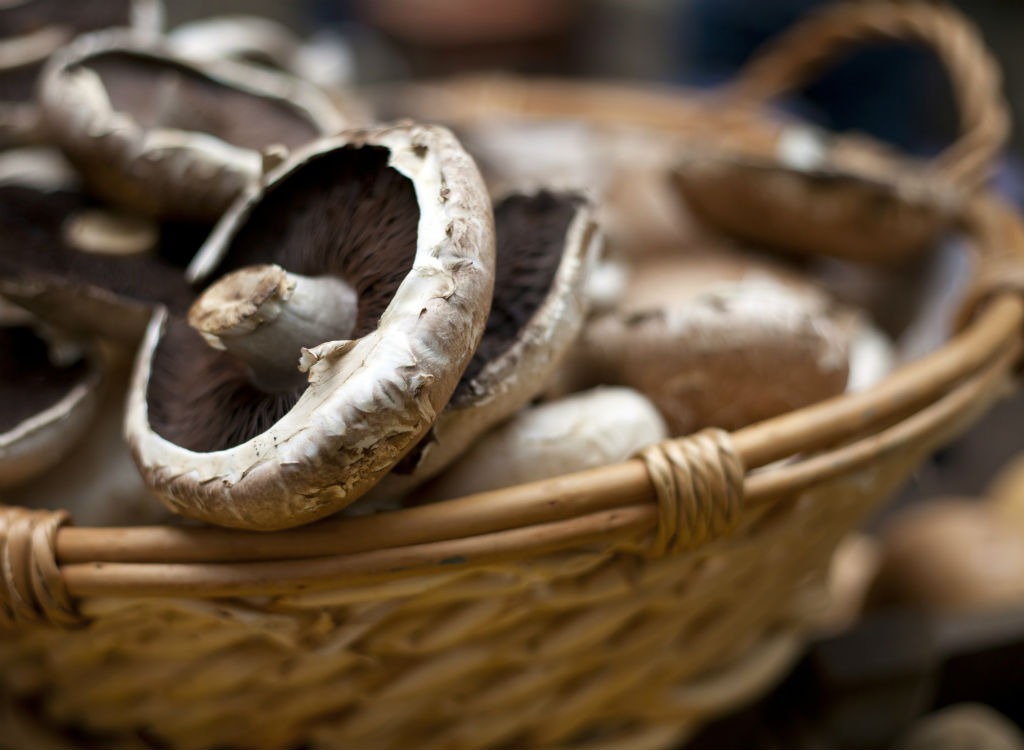
Um, ew! But believe it or not, it's true. To put mushrooms to the test, simply give 'em a whiff. If they smell more like salmon than they do veggies, then you'll definitely want to pass. And for more of the best food tips, here are 52 Life-Changing Kitchen Hacks That'll Make You Enjoy Cooking Again.
